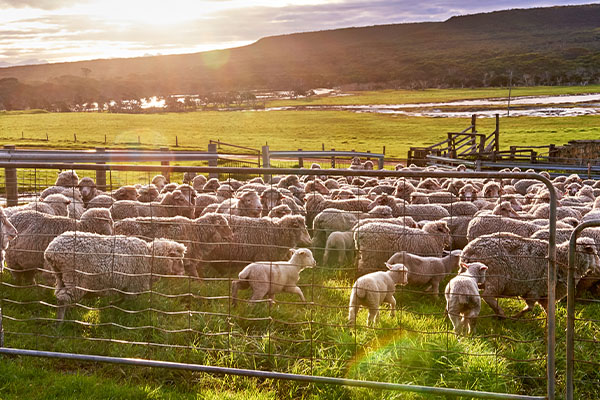It is that time of the year again; many sheep graziers are scanning and preparing for lambing, with some early ones on the ground already.

So, it’s time to start thinking about options for pre-lambing to make sure you are preparing your flock for success. Addressing your ewes’ needs in the last few weeks of pregnancy will help ensure their healthy recovery and get more lambs on the ground.
Livestock Production Specialist Georgia Adams suggests the following steps for a successful lambing season.
Nutrition is number one
Feed your flock early to achieve your optimal condition score, and save money in the process.
You have until day 100 of pregnancy before your ewes’ nutritional requirements soar and therefore so do your feeding costs! On average, every 0.7 body condition score (BCS) improvement will return up to a 20 per cent (pc) improvement in lamb survival. Optimal BCS is 2.8 to 3 for singles and 3 to 3.3 for twins.
Remember, feed on offer varies greatly so reach out to your trusted specialist for tailored feed plans or budgets.
Consider supplementation for key trace vitamins and minerals
Green feed does not remove the need for supplementation of key trace vitamins and minerals. In fact, rapid growing pasture can often have nutritional deficiencies and imbalances.
Additionally, wheat, barley, and oats are deficient in calcium, magnesium and sodium, but high in potassium, which can increase the risk of hypocalcaemia, lactation tetany and pregnancy toxaemia in ewes. Consider your best supplementation strategy and prioritise twin bearing ewes, building reserves from scanning.
Supplementation starts at 2 cents per head, per day – a small cost to improve lamb and ewe health and survival.
Vaccination
Ewes should be getting their 6 in 1 (east coast) or 3 in 1 (west coast) and Eryvac annual boosters a minimum of 2 weeks, but ideally 4 to 6 weeks before lambing. This not only protects the ewe for another year but transfers immunity to the lamb via antibodies in the colostrum, protecting the little guys until marking (up to 10 weeks old).
The new GlanEry vaccine makes things even more simple, covering both in the 1mL shot.
Worm control
Ewes are of course under increased stress during pre-lambing and into lactation which results in a lower immune response and therefore less resilience against parasitic burden.
With many regions across Australia not short of green pick, worms are having an absolute field day! Consider a worm egg count on pregnant ewes and weaners or monitor for signs of worms to make sure you don’t end up with wormy lambs come lamb marking.
When selecting drench, if needed, ensure it works at greater than 95 pc efficacy. The decision to use a short acting or longer acting drench will depend on availability of low worm risk lambing paddocks & conditions. There is on most properties inspected carryover worm contamination given our soft finish last season. So, consult your local elders branch for the best option for your program.
And above all…
Good planning is key to ensure your lambing runs smoothly. Consider what your best options are to meet the nutritional, physical and health requirements of your flock.
Don’t forget Elders is here to help, every step of the way!
Please note: this article contains information of a general nature, and does not take into account your personal objectives, situation or needs. Before acting on any information, you should consider the appropriateness of the information provided, and seek advice on whether it is fit for your circumstances.